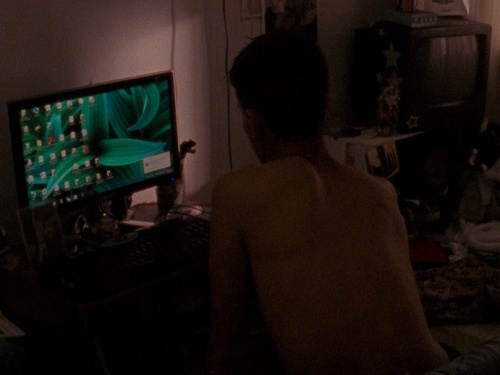Sonic Ethnographer: An Interview with Ernst Karel
Ernst Karel is Lecturer on Anthropology, Assistant Director of the Film Study Center, and Lab Manager for the renowned Sensory Ethnography Lab at Harvard University. In his audio projects, he works with analog electronics and location recordings, sometimes separately, sometimes in combination, to create pieces that move between the abstract and the documentary. Karel collaborates with filmmakers as a sound recordist, mixer, and sound designer. Notably, Karel has worked on key films produced at the Sensory Ethnography Lab including Sweetgrass (2009) and Leviathan (2012), both of which were released in UK cinemas via Dogwoof.
Manakamana, directed by Stephanie Spray and Pacho Velez and produced by Leviathan directors Lucien Castaing-Taylor and Véréna Paravel , is the latest feature documentary from the Sensory Ethnography Lab to play at the ICA Cinemas. On the eve of the film's release, Dogwoof's Patrick Hurley caught up with Karel for the ICA Blog to talk about his post-production sound work on this film as well as his own sonic artwork made while traveling in cable cars.
Patrick Hurley: As well as doing the mix for Manakamana, you've also created an album of recordings from Swiss mountain transport systems. What do you find sonically interesting about cable cars?
Ernst Karel: That project, which resulted in a CD called Swiss Mountain Transport Systems, an 8-channel sound installation and a 5.1 version for imageless cinema, began in 2008 when my partner, Helen Mirra, was living in Basel, Switzerland, on a year-long artist residency. At that time, walking had become a central part of her art practice, and the work she was making involved day-long hikes in the mountains. I joined her for part of the summer and the fall. Our first walk together involved traveling by train and then gondola (aerial cable car) to reach the hiking trail. I was struck by the sounds of going up the mountain: the whirrs and clangor of the base station’s machinery, the slam of the door as the small pod swings around and, with a series of thuds, is launched into a sudden and subdued near-silence, the austerely beautiful low drone of distant motors transmitted through the heavy cable to resonate in the enclosed space suspended from it, interrupted periodically by rhythmic pummeling when the car passes over rollers, the open windows that allow transient acoustic glimpses of a vast surrounding landscape inhabited by humans and other animals.
It’s an emergent music that at the same time indexes a particular emplacedness. The unprocessed recordings of Swiss Mountain Transport Systems document the various transport systems which are specific to Switzerland’s mountainous terrain—gondolas, funiculars, chairlifts—of different types, of different vintages, and accessing different elevations, recorded from within these mostly-enclosed mobile environments. In this way the project is a sonic investigation into the integration of such technology into the Swiss social-geographical landscape.
ICA Cinema-goers will be familiar with Sweetgrass and Leviathan, and this weekend will have the opportunity to experience Manakamana. As a common denominator among these films—having done the sound mix and compositions for each—could you tell us where you've replicated certain techniques and cases in which you've tried new things?
Well, clearly the movies could hardly be more different from each other, and so the sound for each was approached quite differently. But at the same time, one thing that they have in common is simply a commitment to place, to the sounds that emerge from a particular encounter. In each case that starts with the sync sound recorded along with the image, though here Leviathan and Manakamana could not be more different: Manakamana was recorded immaculately in stereo by Stephanie Spray, in sync with but separately from the 16mm image, and the soundtrack for Leviathan started and grows outward from the weird electroacoustic music that emerged from the encounters between the plastic-encased sport camera’s built-in mono microphone and its harsh environment. So each was really an opportunity to try out new things.
When Leviathan came out, it was often compared to 2001: A Space Odyssey, and Stephanie Spray has commented that when you worked on the sound for Manakamana, you helped them to 'emphasise particular frequencies over others for a subtle sci-fi effect'. Regarding both films, I’m interested to know if you were deliberately trying to create or invoke something otherworldly? It’s a curious objective in non-fiction film…
I think this might be an instance of the notion that a goal of anthropology is to make the familiar strange and the strange familiar. I wasn’t intending an otherworldliness per se, but rather an in-depth investigation into the nature of the place, and for example in Manakamana in sections where there is less speaking, when we therefore have occasion for close listening to the rich acoustic environment of the cable car’s mechanism and the passing landscape, that meant paying attention to the resonant frequencies of the cable car’s drone, and sometimes tweaking the sound to subtly emphasize those tones.
Sound takes extra prominence during the end credits of both Leviathan and Manakamana for which you have done original compositions. Can you tell us a bit about your creative process here?
The sequence following the credits in Leviathan featured an extended composition for the multichannel space of the cinema that made the most of the odd electroacoustic sonorities I mentioned before, loosened somewhat from reference to immediately present images. At the end of Manakamana, during the credits this time rather than after them, we similarly are freed from being tied to an immediate audiovisual experience, and the composition opens outward somewhat.
Experience Manakamana in the ICA Cinemas from 12 December. Hot tip from Ernst: sit in the centre of the room!
This article is posted in: Film, Interviews
Tagged with: Manakamana, Ernst Karel, Electroacoustic, Sonic Enthnography, Film





